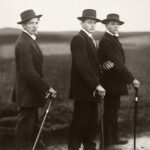Before the acclaimed Smoke Signals brought Native American stories to a wider audience, there was Dance Me Outside. Released in 1994, this Canadian film offers a glimpse into the lives of young Indigenous men on a fictional Ontario reservation. Silas Crow (Ryan Rajendra Black) and Frank Fencepost (Adam Beach) are the central figures, hilariously navigating life while aspiring to attend auto mechanic school. Their ambitions, however, are shadowed by serious realities when a young woman from their community becomes a victim of racial injustice, her murderer receiving a lenient sentence. This backdrop of systemic issues infuses the comedy with a poignant undercurrent, making film dance me outside a unique cinematic experience.
At the heart of Dance Me Outside are Silas and Frank, two teenagers grappling with everyday concerns against a backdrop of deeper societal problems. Their focus on essay writing for mechanic school is constantly disrupted by the injustices around them, and personal family dynamics. Adding to the complexity is the return of Silas’s sister, Illiana (Lisa LaCroix), with her white husband, Robert (Kevin Hicks). Robert’s character becomes a focal point for exploring cultural misunderstandings and prejudices within the community.
Robert’s introduction into Illiana’s family is far from smooth. Despite his genuine attempts to connect with his wife’s heritage, he often finds himself an outsider. The family’s conversations in a language he doesn’t understand highlight the communication barriers and unspoken judgments he faces. Further complicating matters is Gooch (Michael Greyeyes), Illiana’s former partner recently released from prison, who embodies resentment towards Robert as an unwelcome outsider and a stark contrast to Indigenous identity. This tension culminates in a memorable, and arguably the film’s most comedic, scene where Silas and Frank decide to bestow upon Robert an “authentic Indian name.” This scene, available online, cleverly utilizes stereotypes associated with Native American culture for satirical effect, revealing the film’s nuanced approach to humor.
https://www.youtube.com/watch?v=uvUOSlRA1FA
While Robert’s cluelessness provides comedic relief, the film doesn’t shy away from the darker realities of racial injustice. Clarence (Hugh Dillon), the white man responsible for the death of Little Margaret, receives a mere manslaughter charge, sparking outrage and grief within the reservation. Despite its comedic elements, Dance Me Outside confronts the palpable frustration felt by Native communities towards ineffective legal systems. Fueled by anger and a sense of powerlessness, Silas and Frank contemplate taking drastic measures, reflecting the desperation and impulsivity of youth facing systemic failures. The film skillfully balances its comedic tone with these heavier themes, exploring the characters’ responses to injustice without resorting to simplistic solutions.
However, Dance Me Outside is not without its critics. Some within Native communities have voiced concerns regarding its portrayal of issues like drinking and violence, arguing that it reinforces negative stereotypes about reservation life. These criticisms are valid, particularly as the film presents a community grappling with significant instability. Adding another layer to the discussion is the fact that the film is based on a book by a non-Native author, W.P. Kinsella, and directed by Bruce McDonald, a white Canadian director. This raises important questions about perspective and potential biases, highlighting the ongoing conversation about who gets to tell Native American stories and how.
Despite these valid critiques, Dance Me Outside remains a significant film for its era and beyond. It stands out for depicting Native Americans in a contemporary context, moving away from stereotypical historical portrayals common in cinema. It avoids romanticized or outdated tropes, offering a snapshot of modern Indigenous life. Furthermore, the film boasts a dynamic soundtrack, featuring Keith Secola’s energetic “NDN Kars,” prominently featured in the naming ceremony scene, and a memorable car sing-along to Cher’s “Half-Breed” by Frank and Silas, adding to the film’s distinctive character.
Dance Me Outside may not be a perfect film, but its cultural impact and its willingness to tackle complex issues within a comedic framework make it undeniably notable. It encourages viewers to look towards a future where representation of Native Americans in film is more nuanced, authentic, and inclusive.

